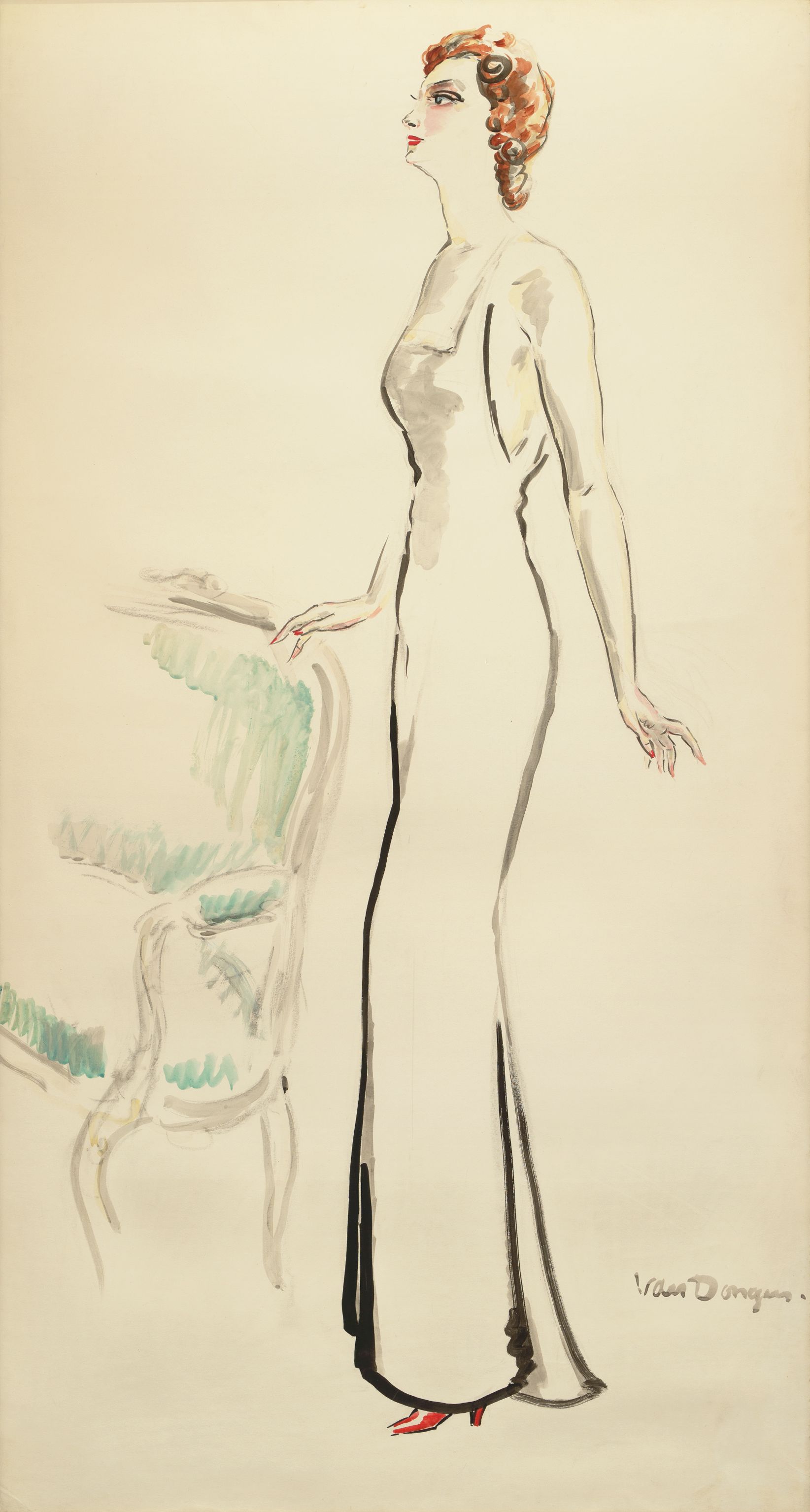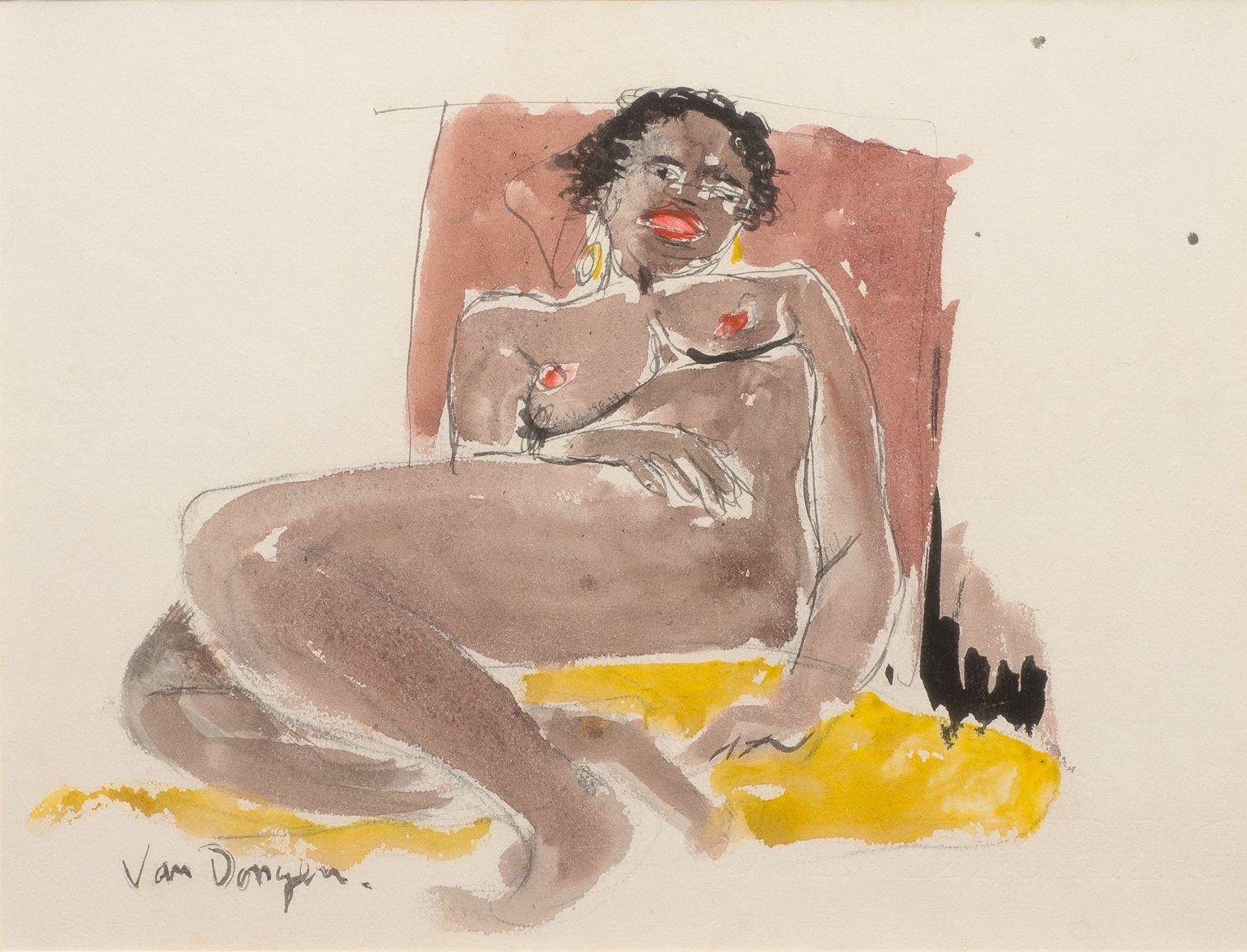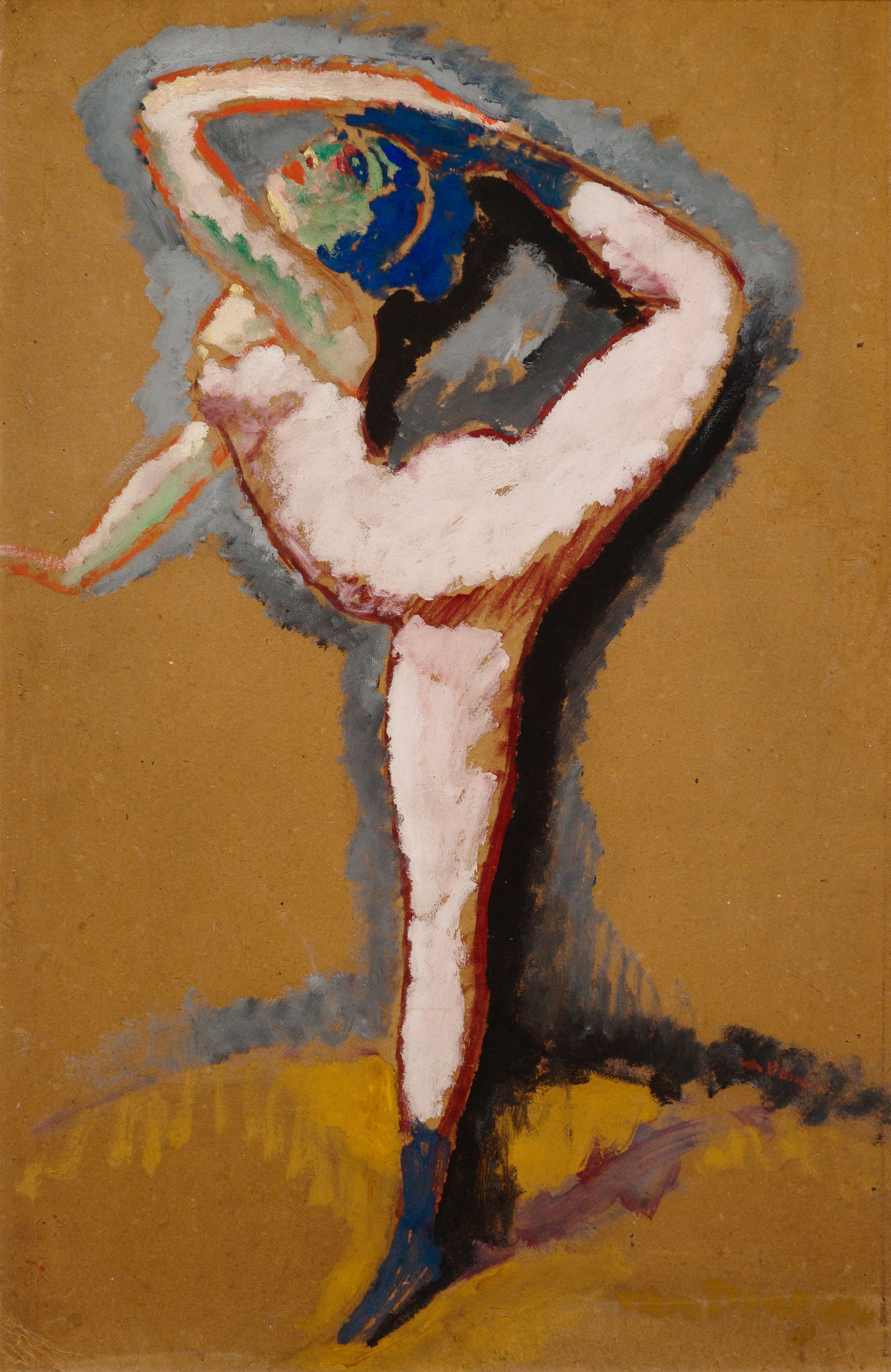C.T.M. (KEES) VAN DONGEN
Artists
Biography
C.T.M. (KEES) VAN DONGEN
1877 Delfshaven (The Netherlands) - 1968 Monte Carlo (Monaco)
Cornelis Theodorus Marie van Dongen was a Dutch-French painter. He was part of the movement referred to as Fauvism. Other painters who belonged to this movement included Matisse, De Vlaminck, Bracque and Dufy. Characteristic of these artists is the use of bright unmixed colors. Born a Dutchman, Van Dongen spent much of his life in France and also obtained French citizenship.
Kees van Dongen was born in Delfshaven to a family of four children. His father owned a malthouse. The company was located next to the house where Kees grew up. At the front and back of the house was water. Through the window one had a view of the boats moored in the water. Kees had great talent for drawing. However, there was no money for a proper art education. From the age of fourteen, Kees had to work.
Between 1896 and 1898, he took evening classes at the Academy of Visual Arts and Technical Sciences (now the Willem de Kooning Academy). This was located on the edge of Rotterdam's red light district where many sailors came. The sailors, prostitutes and dancers were the subject of many of Van Dongen's works. It was a lively neighborhood with coffee houses, brothels, candy stalls, in short an exciting environment for an aspiring artist.
In 1897, twenty years old, Van Dongen left for Paris. There he could barely support himself. He stayed in the studio of the painter Siebe ten Cate in Montmartre. After returning briefly to Rotterdam from 1898, where he devoted himself to illustrations for the Rotterdams Nieuwsblad, Van Dongen settled permanently in Paris from 1900. There he initially occupied himself with drawing and illustrating magazines. His fluent drawing style effortlessly transitioned into a style of painting that brought him into the milieu of the French Fauvists. This movement first showed its work at the 1905 Salon d'automne, where work by Kees van Dongen was also on display.
Fauvism was a new phenomenon for that time. It was a much more expressive way of painting than had been practiced until then. Especially the use of pure unmixed colors is characteristic of the fauvists. Van Dongen found himself in Paris among the French and developed his own identity. His work is not so much French-oriented, like that of his Parisian colleagues, as it is internationally oriented. He visits Spain, Morocco, Tunisia, Egypt and the Netherlands. His work therefore differs from the more nationalistic cubist art of the French. Van Dongen's work is clearly influenced by the different cultures he has become acquainted with.
Once settled in Paris, Van Dongen moves into a large studio in Montparnasse, where he not only receives his art friends but also organizes dance parties. By now he has become a celebrated artist. The cultural life ended during the First World War. After this war ends, life in Paris picks up full speed and Van Dongen manages to draw attention to his work.
He creates large portraits of people from the world of film and theater with which he achieves great success. Van Dongen moves into an even larger studio. The parties and celebrations he gives there play an important role in the way he presents himself as an artist. He is at the height of his fame and is enjoying this life. He has commissions to choose from. In 1929 he becomes a naturalized Frenchman. In the 1920s, he painted mostly portraits in the fashionable circles of Paris. By now Van Dongen had become more French than Dutch.
During World War II, Van Dongen tried to continue painting as much as possible. He did not care too much about the circumstances. Even after the war, he remained active as a painter, while also continuing to create graphic work. He lithographed and illustrated many books. Van Dongen remained active as an artist until an advanced age and participated in nightlife.
Today his work, in addition to private collections, can be found at Museum Boymans-van Beuningen in Rotterdam, Haags Gemeentemuseum, Stedelijk Museum in Amsterdam and Stedelijk van Abbe Museum in Eindhoven.
If there is one subject that is part of Van Dongen's work it is "women. He called women "the most beautiful landscape. His drawings of girls from Rotterdam's red light district caused a scandal. Works of naked women were removed from an exhibition at Boymans-van Beuningen in 1949 because of the uproar over them. He painted Picasso's girlfriend and made lithographic posters of Brigitte Bardot. He often portrayed women in bright colors and with big eyes. His nudes also became very famous.
5 results sorted by artist. Showing results 1 - 5.




